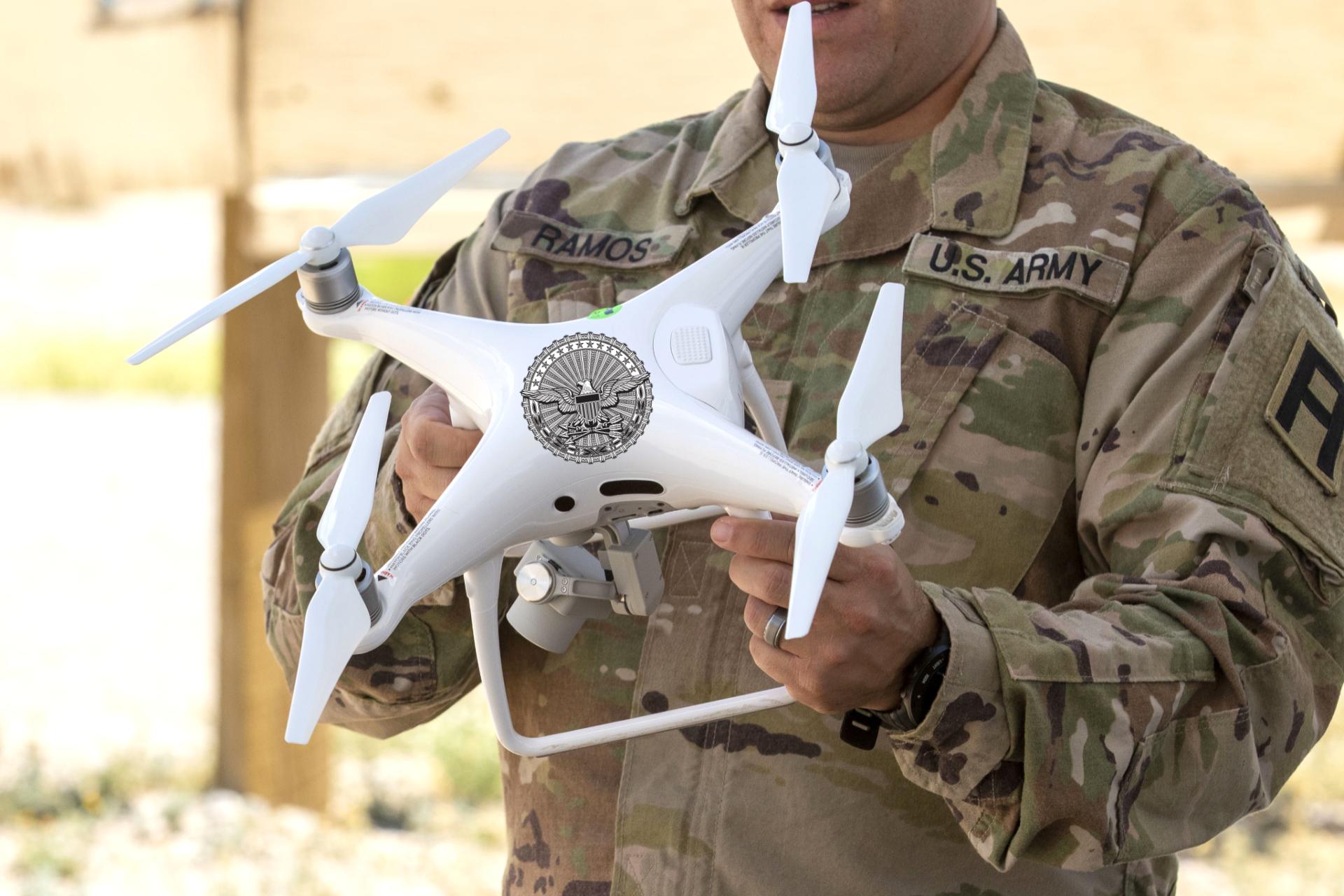What is it? The Joint Counter-small Unmanned Aircraft Systems Office (JCO) leads and directs joint Counter-small Unmanned Aircraft Systems (C-sUAS) doctrine, requirements, materiel and training to establish joint solutions to address current and future small UAS threats.
What are the current and past efforts of the Army?
The JCO was established by the Secretary of the Army, in February 2020, under a 2-Star Director within the Army G-3/5/7 and the Army Rapid Capabilities and Critical Technologies Office (RCCTO) is assigned as the materiel and acquisition lead for the JCO. Specific accomplishments include:
Completed an operational assessment of fielded C-sUAS capabilities and selected 10 initial Joint C-sUAS systems for continued investments.
Published the DoD C-sUAS Strategy providing the framework for addressing sUAS threats and hazards in the homeland, host nations, and contingency locations.
Published the Joint C-sUAS Operational Requirements, providing parameters that address current and future C-sUAS capabilities.
Finalized the common C-sUAS test range decision and C-sUAS testing protocols, which approved three test ranges to support C-sUAS capability and limitation testing and established standards for all C-sUAS testing.
Held the first of an on-going series of semi-annual demonstrations in April 2021 at Yuma Proving Ground where vendors displayed C-sUAS capabilities focused on Low Collateral Effects Interceptors.
Published Joint Knowledge Online (JKO) familiarization and training modules and reference guides to assist Warfighter effectiveness.
What continued efforts does the Army have planned?
The JCO will continue to work with the services and interagency stakeholders in developing synchronized, multi-domain C-sUAS solutions. Specific efforts include:
Establish Joint training and doctrine required to deliver trained forces and non-materiel solutions to enhance Joint C-sUAS operations.
Conduct the next semi-annual industry demonstration in September to continue evaluating emerging technologies that close gaps, inform requirements, and promote innovation.
Build the C-sUAS team with interagency/international partners.
Monitor global sUAS incident reporting and provide rapid response support.
Work with the Intelligence Community to develop threat assessments.
Why is this important to the Army?
Adversary sUAS represent a rapidly proliferating, low cost, high-reward and potentially lethal and damaging capability against U.S. personnel, critical assets and interests.
The Army and the broader DoD must modernize and transform its C-sUAS capabilities to enable the nation to win against adversaries that have already effectively leveraged sUAS technology that places its personnel, critical assets and interests at risk.
The Department of Defense is slated to release its counter-small unmanned aircraft systems strategy next month, bringing an open-system architecture and enterprise approach to the military’s capabilities.
The Army-led Joint C-sUAS Office, or JCO, has worked to align current and future counter-drone technologies to support operational requirements at home and abroad, said Maj. Gen. Sean A. Gainey, the program’s director.
The increased threat posed by drones, combined with a lack of dependable networked capabilities to counter the unmanned threat, has created a concerning “tactical development” within U.S. Central Command’s area of responsibility, Gainey said, paraphrasing a recent statement made by its commander.
Classification of unmanned aircraft systems is divided into five category groups. The defense secretary appointed the Army as the executive agent for counter-small UAS groups one through three, said Col. Richard Wright, the JCO deputy director.
These first three categories represent smaller, low-cost drones, whose rapid proliferation can threaten personnel and critical assets, or impact the military’s ability to conduct various operations. Groups four and five identify larger UASs typically controlled by state-actor threats, according to JCO officials.
Maj. Gen. Sean A. Gainey, director of the Joint Counter-Small Unmanned Aircraft Systems Office, discusses the different categories of systems during a breakout session at the 2020 Army Fires Conference Sept. 30, 2020. The Army-led Joint C-sUAS Office has worked to align current and future counter-drone technologies to support operational requirements at home and abroad.
Close to 90% of the military’s counter-drone capabilities are electronic warfare-type systems, Gainey said. Many of these weapons use lasers or microwave-signal propagation to disrupt the communications link between user and device.
“However, the threat is evolving,” Gainey added, as the joint force now has to account for swarm and autonomous drones, in addition to off-the-shelf technology. Further, an increased number of threats in an airspace can potentially overwhelm a C-sUAS system’s operator.
This shift led the JCO to revise the Defense Department’s C-sUAS requirements and build a networked systems approach. Officials are also considering artificial intelligence and machine learning options to help discriminate and track possible threats.
The Army also plans to incorporate its C-sUAS capabilities into the Integrated Air and Missile Defense Battle Command System, Gainey said. The new command system is currently going through the evaluation process by AMD entities and Army Futures Command.
Along with improving capabilities, leaders have identified the need to bolster training to improve the military’s counter-drone capabilities, Gainey said.
The Fires Center of Excellence at Fort Sill, Oklahoma, is expected to build a Joint C-sUAS academy by fiscal year 2024. The Fires CoE supports current training operations out of Yuma Proving Ground in Arizona.
“We can start to institutionalize this capability and integrate it with our air and missile defense systems,” Gainey added. “Having a synergy at the schoolhouse will help the force understand how to get after this problem from a DOTmLPF-P [or doctrine, organization, training, materiel, leadership and education, personnel, facilities and policy] perspective.”
Moving forward, the JCO will continue to work with the Army Rapid Capabilities and Critical Technologies Office to ensure the timely and proper fielding of C-sUAS systems, Gainey said.
To help industry partners understand the DOD’s emerging requirements and encourage competition, both the RCCTO and JCO are scheduled to conduct a C-sUAS virtual open house on Oct. 30. The JCO also plans to organize future industry demonstration days to identify and assess technologies against emerging threats, Gainey said.
HLS.Today DEPARTMENT-OF-DEFENSE-COUNTER-SMALL-UNMANNED-AIRCRAFT-SYSTEMS-STRATEGY (1)
HLS.Today Source: Army.Mil








